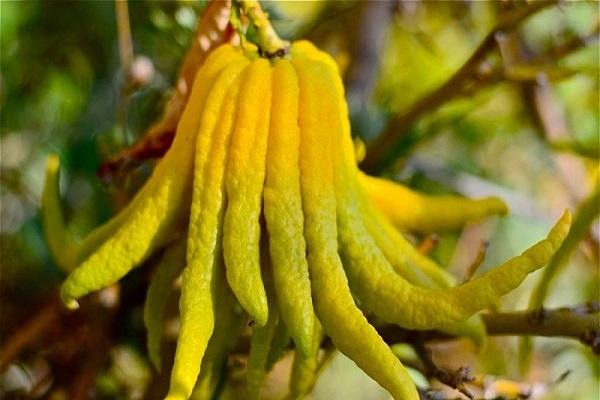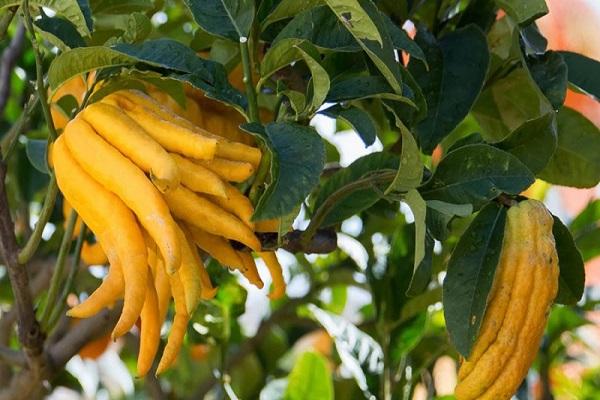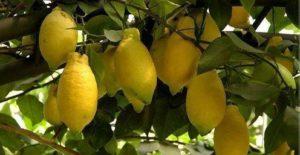Description of citron of the Buddha Hand variety, rules of planting and care at home
Citron of the Buddha's Hand is considered a very popular plant, which has certain characteristics. To succeed in growing a crop, it is worth taking proper care of it. In this case, it is necessary to water the plant in a timely manner and moisten its leaves. Fertilization, protection from diseases and pests is of no small importance.
Origin story
Citron belongs to the genus Citrus from the Rutov family. As early as 4000 years BC, this culture grew in Mesopotamia, India and China. Today citrons are common in the tropics and subtropics..
Citron is mentioned in the Bible. This fruit was mentioned in their works by the ancient Roman poet Virgil and the philosopher of Ancient Greece Theophrastus. The healing and aromatic properties of citron were recognized by Alexander the Great. It was he who contributed to the spread of citron beyond the borders of the Euphrates and Tigris valleys.
Many varieties of culture are known today. In addition to the Buddha's Hand, there is a variegated citron. There is also Maxim's citron, which resembles a lemon in appearance.
Description and characteristics of Citron Buddha's Hand
Citron of this variety has gained popularity among lovers of citrus fruits. This is due to the unusual appearance of the plant. The culture has no serious industrial purpose. Most often it is grown for decorative purposes.
Flowering features
The plant is characterized by large flowers that reach 5 centimeters in diameter and are characterized by a single arrangement. The inflorescences are characterized by a pronounced pleasant aroma and a white tint. Flowering is observed in the second half of spring. At the same time, a certain number of inflorescences appear in the summer. The fruits ripen in late autumn or winter.

Description of fruits
This plant is characterized by unusual fruits that resemble fingers. However, they do not always open. This can happen 10-20% of the time. The rest of the fruit is like a clenched fist.
If the fingers still open, the citron has 5-9 branches. They vary in size and shape. The fruits of this plant are characterized by a thick rind, which in volume reaches half the size of the fruit. On top there is a bumpy skin of a rich yellow hue. The fruits are distinguished by a pronounced pleasant aroma.
The average fruit weight is 400 grams. Gustatory characteristics should be mentioned separately. Citron has a slightly dryish pulp. It is characterized by a wadded consistency. Citron can be bitter or neutral in taste.Fresh it is not eaten.

The fruit contains many essential oils. They also contain rare glycosides. The fruit includes large seeds that resemble pumpkin seeds. There can be quite a lot of them. Often, the bones are localized directly under the skin. This is especially common on overripe fruits.
Usually citrons are used to make candied fruits. It is also permissible to add them as a seasoning in various dishes. The fruit should be withered or dried first. In addition, the fruits are used to decorate festive dishes.
Crown characteristic
In the open field, the plant reaches 3.5 meters. In a pot, the size of the culture does not exceed 1.5 meters. The plant is distinguished by long branches that grow vertically and are covered with sparse thorns.

The citron is characterized by beautiful leathery leaves that have a light color. They are located on short petioles. The leaves may differ in shape. The sheets are almost always elongated and have rounded ends. On average, the leaves reach 9-14 centimeters.
With proper care, the tree develops rapidly. It can be easily propagated by rooting cuttings. Today, breeders have managed to breed variegated citron. Its foliage is covered with creamy stains.
The specifics of growing a plant
To grow a strong plant at home, you need to follow a number of recommendations. Under natural conditions, the culture grows in the tropics and subtropics. However, if desired, it is permissible to grow it indoors. Moreover, the fruits obtained at home usually do not exceed 500 grams in weight.

When growing a crop, you can face certain difficulties:
- First of all, it should be borne in mind that the plant does not tolerate a strong drop in temperature. This indicator should not be less than + 10-15 degrees.
- Citron hardly perceives the effects of direct sunlight.
- The plant needs abundant watering. You should also systematically moisturize the leaves.
- Culture requires specific conditions. She needs a special substrate, a drainage layer, fertilizers.
Plant Care Tips
To succeed in growing citron, you should follow the basic guidelines for growing it.

Lighting
The culture is considered light-loving. However, it should not be exposed to direct sunlight, which will harm the plant.
Humidity and temperature
Citron is considered a heat-loving culture. In summer, the optimum temperature should be + 20-25 degrees. In autumn and winter, this indicator should not fall below + 10-15 degrees. Subject to the temperature regime, citron will be able to bloom well and give a bountiful harvest.
The plant needs moderate air humidity. It should be at 50%. For this, it is recommended to put the citron pot in a tray with damp pebbles. Expanded clay is also suitable for this purpose.

It is worth spraying the plant with warm water every evening. The plant normally takes a regular shower with warm water. The procedure is carried out a maximum of 1 time per month. Pre-cover the soil with a film. This will help prevent overflow.
Watering
In summer, the plant should be systematically moistened. It is recommended to do this every day - morning and evening. In spring and autumn, the soil is moistened as it dries. In winter, the amount of watering should be kept to a minimum. It is worth moistening the soil once a month, since the plant is dormant. For this it is worth using warm water. It should be boiled or settled.

Top dressing
In spring and autumn, the plant should be fed once a week. It is recommended to do this with nitrogen fertilizers and products based on phosphorus and potassium. Superphosphate is an excellent option for citron.From home remedies, a manure solution is suitable. For this, 1 liter of top dressing is mixed with 10 liters of water.
Diseases and pests
The development of diseases is usually caused by a violation of the rules for caring for the plant. With insufficient moisture in the soil, the leaves begin to turn yellow and crumble. This is due to the lack of useful elements in the soil. With excessive watering, the foliage begins to curl and wither.
The plant rarely encounters pest attacks. They can get on the citron from other indoor flowers. When infested by parasites, the foliage becomes pale, dries up and crumbles. Affected plants should be treated with Aktara or Aktellik.

Harvesting and storage
It is recommended to harvest the fruits in November. However, they can be on the branches until summer. When the fruit dries, the peel does not separate well from the pulp. It is prohibited to consume such fruit. Ripe fruits are allowed to be kept in the refrigerator for a maximum of 10 days.
Citron has a thick skin and a specific bitter taste. Therefore, it is not recommended to eat it fresh. In Asia, fruits are often soaked in salt water. This treatment helps reduce bitterness.
Most often, citron fruits are used for making sauces, salads, and baked goods. They are often used to make various drinks. The peel is used to make candied fruits, marmalade, jam. An essential oil is also obtained from it, which is a natural flavoring agent.

The essence prepared from the zest of this plant is used quite actively. It is added to pasta to give it a green hue.
The substance is used to flavor indoor air.
Often the essential oils of the plant are used in the perfumery industry.
Citron Buddha's Hand is an interesting exotic plant that is popular with many flower growers. To succeed in growing a crop, it needs to provide complete and high-quality care.









